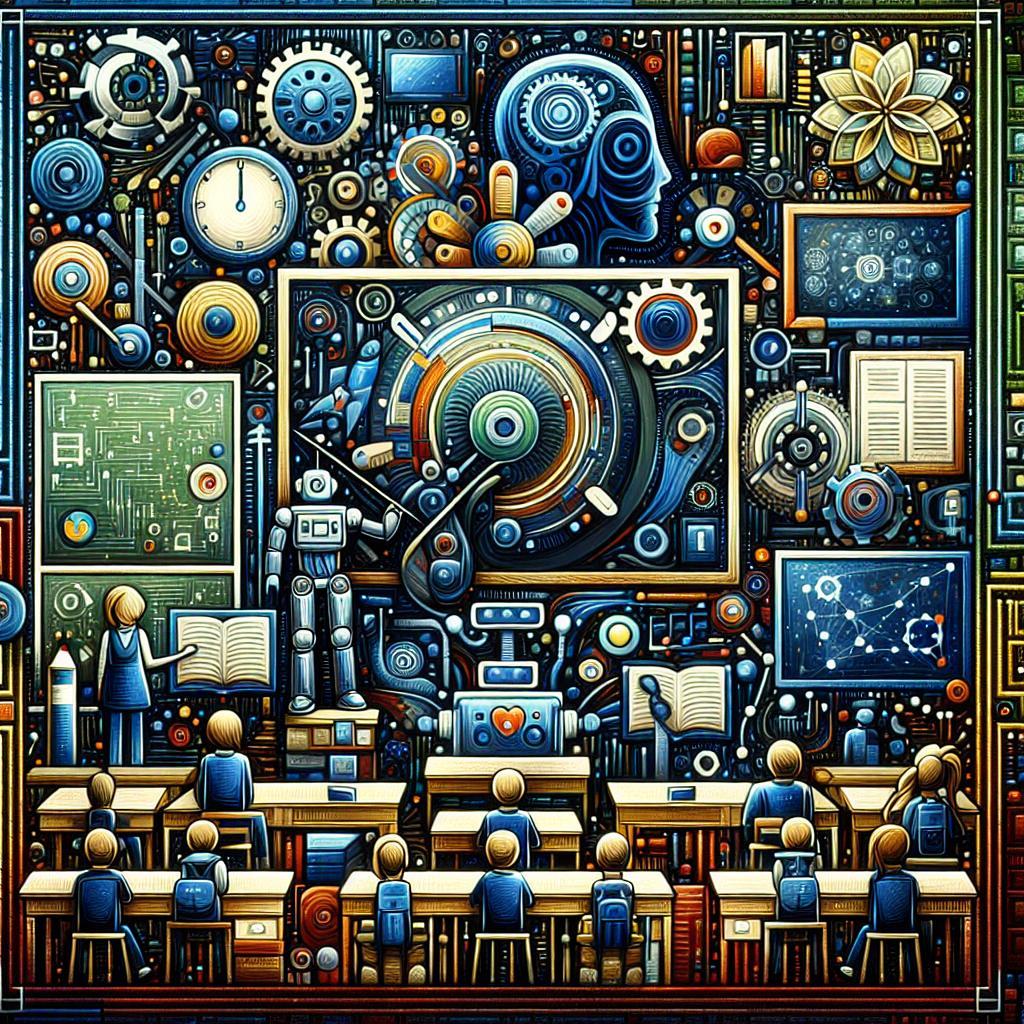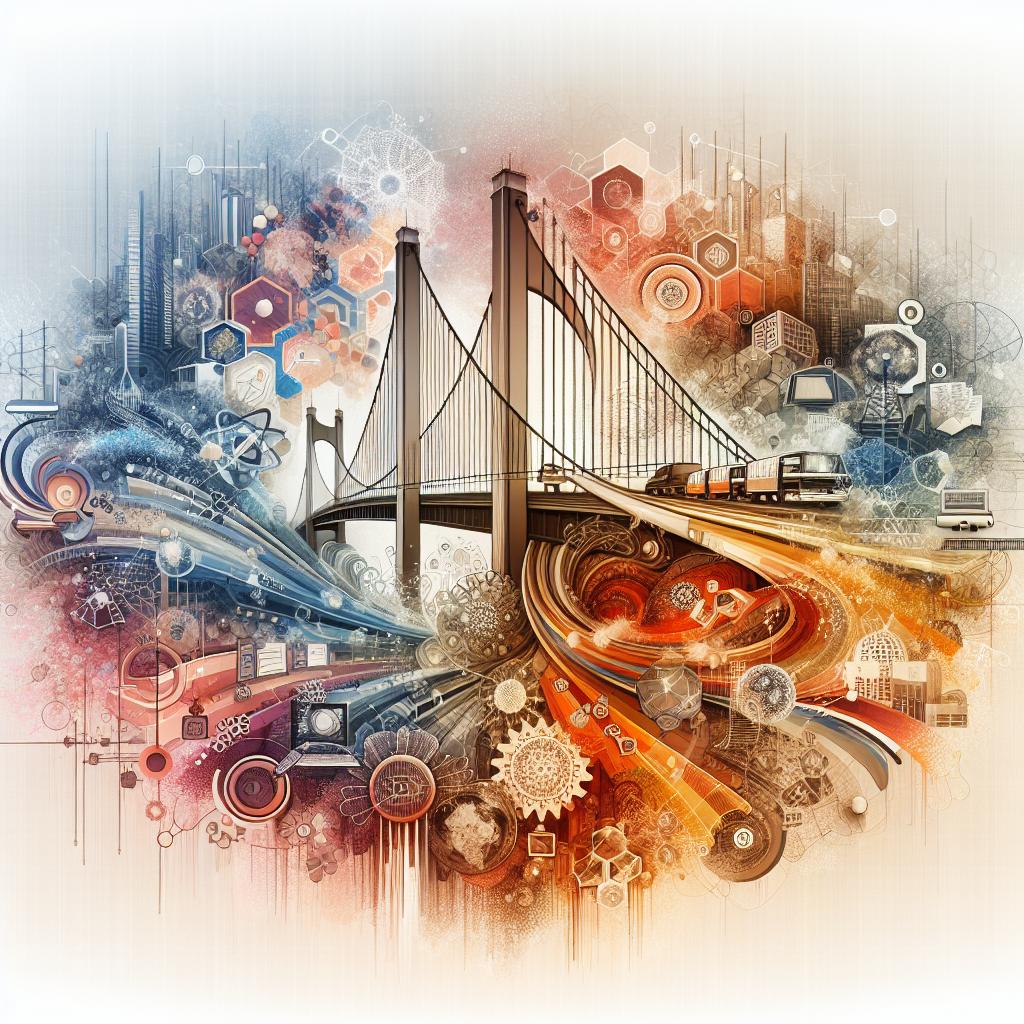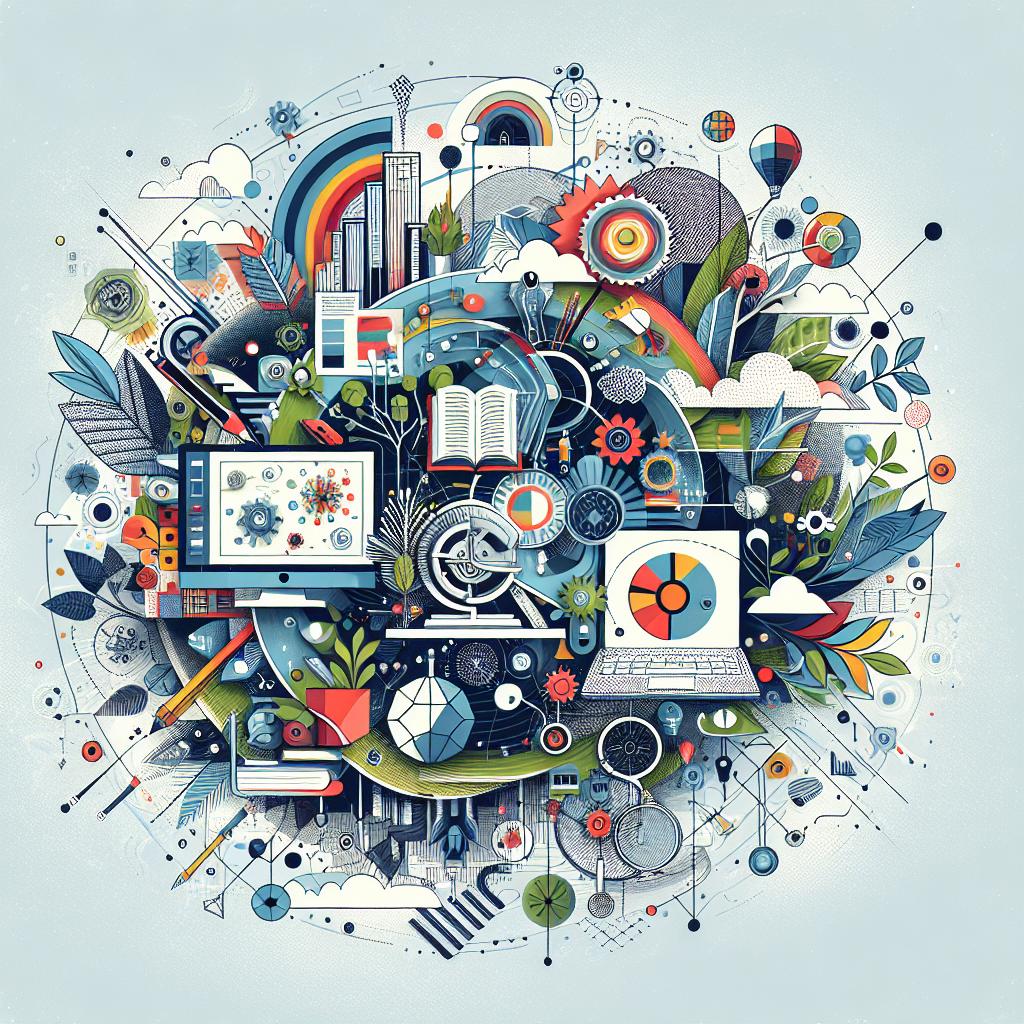Incorporating Technology in the Classroom

In a world where the flicker of screens is almost as common as the rustle of notebook pages, the modern classroom stands at an intersection of tradition and innovation. Imagine a place where students can journey through ancient civilizations via virtual reality, solve algebraic puzzles with the tap of a finger, and collaborate on science projects with peers on the other side of the globe. This is not the classroom of tomorrow, but the classroom of today—transformed by the deft touch of technology. As we cross this threshold into a new realm of education, let’s explore how incorporating technology in the classroom is not just a fleeting trend but a powerful ally in crafting the minds of the future.
Table of Contents
- Innovative Tools for Modern Learning
- Bridging the Gap: Enhancing Student Engagement
- Data-Driven Decisions: Leveraging Analytics
- Classroom Connectivity: Fostering Collaborative Environments
- Navigating Challenges in Tech Integration
- Future-Proofing Education with Emerging Technologies
- Q&A
- To Conclude

Innovative Tools for Modern Learning
In the rapidly evolving educational landscape, leveraging modern technology is essential to create engaging and effective learning experiences. Some of the most transformative tools include:
- Interactive Whiteboards: Transform traditional blackboards into dynamic learning hubs, capable of displaying videos, interactive lessons, and real-time student contributions.
- Game-based Learning: Platforms like Kahoot! and Quizizz make learning fun and interactive, reinforcing concepts through competition and collaboration.
Implementing these tools requires thoughtful integration with existing curricula. It’s essential to balance traditional teaching methods with technology-driven approaches to maximize student engagement and outcomes. Here are some key devices that empower this blend:
| Device | Primary Function |
|---|---|
| Tablets | Portable and versatile for on-the-go learning |
| Chromebooks | Streamlined for classroom collaboration and productivity |

Bridging the Gap: Enhancing Student Engagement
Leveraging digital tools in educational settings can dramatically boost learner interaction and interest. Interactive whiteboards turn ordinary lessons into dynamic learning experiences, fostering a collaborative environment where students can actively participate. Gamification through educational apps brings subjects to life, transforming traditional drills into engaging challenges that encourage persistence and problem-solving. Further, virtual reality (VR) immerses students in historical events or scientific phenomena, making abstract concepts tangible and stimulating curiosity.
Access to online collaboration platforms, like Google Classroom and Microsoft Teams, enables students to work together seamlessly, even outside of school hours. This fosters a sense of community and allows for ongoing discussions and real-time feedback. Consider the following comparison of effectivity:
| Tool | Student Engagement |
|---|---|
| Interactive Whiteboards | High |
| Gamification Apps | Very High |
| Virtual Reality | Extremely High |
| Collaboration Platforms | Moderate to High |
With continuous advancements in technology, teachers can tailor learning experiences to maintain student interest and promote deeper understanding, ensuring every child can benefit from a more engaging and modern education.

Data-Driven Decisions: Leveraging Analytics
Harnessing analytics in the educational sphere empowers educators to tailor instruction and optimize learning outcomes. By analyzing data, teachers can identify patterns and trends in student performance, uncovering insights into which methods are most effective. This allows for a personalized learning environment where interventions can be implemented proactively, ensuring that each student receives the support they need. Key performance indicators can be tracked through various tools, offering a dynamic approach to teaching.
Data analytics also improves decision-making processes at an administrative level. School leaders can gauge the impact of different teaching strategies, allocate resources more effectively, and streamline operations. Consider the following advantages:
- Enhanced Student Engagement: Real-time data helps in understanding what motivates students.
- Resource Optimization: Data highlights which resources yield the best results.
- Predictive Analysis: Predictive models can forecast future academic outcomes.
| Benefit | Application |
|---|---|
| Improved Student Outcomes | Analyzing test scores and attendance |
| Efficient Resource Allocation | Budgeting and staffing decisions |
| Enhanced Teacher Performance | Professional development tracking |

Classroom Connectivity: Fostering Collaborative Environments
In today’s educational landscape, the integration of technology in the classroom bridges gaps and creates a more inclusive learning environment for everyone. By leveraging digital tools, students and educators alike can benefit from a more interactive experience. Interactive whiteboards, for instance, allow students to collaborate on projects in real-time, regardless of physical location. Cloud-based platforms enable the sharing of resources and ideas, fostering a sense of community among classmates. Tools like Google Drive and Microsoft Teams make it easier to manage and track group tasks, promoting accountability and collective effort. This collaborative approach not only enhances academic performance but also builds essential soft skills like teamwork and communication.
Besides fostering collaboration, technology also personalizes the learning experience, catering to individual needs while maintaining a sense of unity. Students can utilize educational apps for topics they find challenging, while still contributing to group projects. Discussion forums and virtual breakout rooms offer spaces for dialogue and peer-to-peer learning, breaking down traditional barriers. The use of polls and quizzes during lessons keeps students engaged and provides instant feedback for teachers, enabling a more dynamic and responsive classroom environment. Such integration not only benefits students but also equips educators with the tools they need to create a harmonious and effective teaching space.
| Tool | Purpose | Benefit |
|---|---|---|
| Google Drive | File Sharing | Enhanced Team Collaboration |
| Microsoft Teams | Project Management | Improved Accountability |
| Interactive Whiteboard | Live Collaboration | Real-time Interaction |
| Polls & Quizzes | Student Engagement | Instant Feedback |

Navigating Challenges in Tech Integration
Integrating technology into the classroom can often be met with hurdles such as technical issues, varying levels of digital literacy among staff and students, and resistance to change. However, addressing these challenges can result in a more engaging and impactful learning experience. First, it’s imperative to ensure that all stakeholders have access to the necessary resources, which may involve providing additional training or access to tech support. Flexible lesson planning and backup strategies can minimize disruptions caused by unexpected tech failures. Cultivating an inclusive atmosphere where feedback is encouraged will also foster a collaborative environment, enabling everyone to adapt to new tools more smoothly.
Here are some strategies to navigate these challenges effectively:
- Professional Development: Regular training sessions can help teachers stay updated on the latest technology trends and tools.
- Student Engagement: Utilize interactive tools like smartboards or learning apps to make lessons more engaging.
- Technical Support: Provide a readily available support system to troubleshoot any tech-related issues during classes.
| Challenge | Solution |
|---|---|
| Lack of Resources | Secure funding for essential tools and training. |
| Resistance to Change | Engage stakeholders in decision-making processes. |
| Technical Difficulties | Maintain an efficient tech support system. |

Future-Proofing Education with Emerging Technologies
In the ever-evolving landscape of education, harnessing the potential of emerging technologies is crucial to creating adaptable and innovative learning environments. Classrooms enhanced with augmented reality (AR) can provide students with immersive experiences, making abstract concepts tangible. For example, AR layers interactive 3D models on top of textbook images, allowing students to explore complex structures in anatomy, chemistry, or engineering in a more engaging way. Similarly, virtual reality (VR) offers virtual field trips, enabling students to visit historical sites, scientific laboratories, or even outer space without leaving their seats, thereby broadening their horizons and enhancing their learning experiences.
Artificial intelligence (AI) and machine learning are also revolutionizing education by offering personalized learning paths tailored to individual student needs. AI-driven analytic tools can identify areas where students struggle and suggest resources or adaptive learning strategies to bridge knowledge gaps. This not only supports differentiated instruction but also enhances teacher efficiency. Additionally, integrating gamification elements through educational apps and interactive platforms fosters a dynamic and enjoyable learning environment. These technologies not only cater to various learning styles but also promote critical thinking, problem-solving skills, and digital literacy, essential competencies for the future workforce.
| Technology | Application | Benefit |
|---|---|---|
| AR | Interactive 3D Textbooks | Enhanced Engagement |
| VR | Virtual Field Trips | Accessible Learning Experiences |
| AI | Personalized Learning Paths | Targeted Instruction |
| Gamification | Educational Apps | Dynamic Learning Environment |
Q&A
Q: Why should technology be incorporated into the classroom?
A: Incorporating technology in the classroom offers a plethora of benefits; it enhances learning experiences, caters to diverse learning styles, and prepares students for a tech-driven world. With smart devices and intuitive software, education becomes interactive, engaging, and accessible to all. Essentially, it fosters a more dynamic and personalized learning environment.
Q: What are some effective ways to integrate technology into everyday lessons?
A: Teachers can intertwine technology with lessons by using interactive whiteboards, educational apps, and virtual reality experiences. Tools like Google Classroom streamline assignment submissions and feedback. Incorporating multimedia presentations or gamified learning modules can also make subjects more captivating and comprehensible.
Q: What challenges might educators face while introducing new technologies?
A: Educators might encounter several hurdles including budget constraints, lack of proper training, and resistance to change. Ensuring equitable access can also be challenging, as not all students may have access to necessary devices or internet at home. Addressing these concerns requires strategic planning and support from both educational institutions and the community.
Q: How does technology accommodate different learning styles and needs?
A: Technology caters to visual, auditory, and kinesthetic learners alike through varied formats such as videos, podcasts, and interactive simulations. For students with special needs, assistive technologies like speech-to-text software or screen readers can significantly enhance their learning experience, ensuring no student is left behind.
Q: Can you give an example of a successful technology integration in a classroom?
A: Absolutely! Consider a history class using virtual reality to transport students back in time. When studying ancient civilizations, students can virtually explore the pyramids of Egypt or the Colosseum in Rome. This immersive experience makes the material more vivid and memorable, fostering a deeper understanding of the subject matter.
Q: How does incorporating technology in the classroom prepare students for the future?
A: Integrating technology equips students with essential digital skills that are crucial in today’s job market. Familiarity with software, proficiency in online research, and the ability to communicate digitally lay a strong foundation for future academic and career pursuits. Technology in the classroom simulates real-world scenarios, preparing students for the evolving digital landscape.
Q: What steps can schools take to effectively incorporate technology?
A: Schools should start by investing in the necessary infrastructure and providing professional development for educators. Establishing a clear technology integration plan and fostering a collaborative culture among teachers are also vital. Piloting programs and seeking feedback from both teachers and students can help refine the approach and ensure successful implementation.
Q: Are there any potential downsides to over-reliance on technology in education?
A: While technology can significantly enhance learning, over-reliance poses risks such as diminished interpersonal skills and reduced physical activity. It is crucial to strike a balance by integrating technology in a way that complements traditional teaching methods, rather than replacing them entirely. Encouraging real-life interactions and hands-on activities helps maintain this equilibrium.
Incorporating technology in the classroom isn’t just about keeping up with the times; it’s about enriching the educational landscape, meeting students where they are, and preparing them for a technologically sophisticated world. By thoughtfully integrating these tools, educators can create an engaging, inclusive, and forward-thinking learning environment.
To Conclude
As the final bell rings and the classroom settles into a contemplative quiet, we stand at the crossroad of tradition and innovation, holding the map to an uncharted future. Incorporating technology into the educational landscape isn’t merely about wires and screens, but about crafting a pathway where curiosity knows no bounds and learning is a lifelong expedition. From digital whiteboards that spark the imagination, to virtual reality that transports us beyond the bounds of possibility, we’re reshaping the very essence of how knowledge is shared and consumed. So, as we close this chapter on the ever-evolving story of education, let us embrace this era of opportunity with open minds and eager hearts. The classroom of tomorrow awaits—bright, boundless, and brimming with the promise of discovery.








Responses